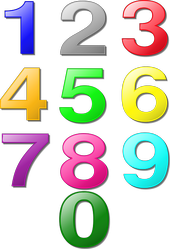If, however, the student is not able to see this, then it is possible to demonstrate mathematically which one is larger. This entails the use of the least common denominator [1]. The denominator in ⅙ is 6, and it is the product of (3)(2)=6. The denominator of ³⁄₇ is 7, and since it is a prime number, it is merely the product of (7)(1)=7.
One may notice that the product (6)(7)=42. In other words, the product of our two denominators gives the least common denominator in this instance. The next step, therefore, is to make the denominators of both fractions equal to each other and then add the two numerators [1].
A simple approach to do this is to multiply ⅙ by 7/7. This is the same as multiplying ⅙ by 1, and the result will be 7/42.
Next, one can multiply ³⁄₇ by 6/6, and again, it is no different than multiplying ³⁄₇ by 1. The result is 18/42.
The student returns, therefore, to the question--which is larger? The comparison is between 18/42 and 7/42, and obviously 7/42 is smaller than 18/42. However, one already knows that 7/42 is the same as ⅙, and 18/42 is equal to ³⁄₇.
Hence, the proper order of the two initial fractions from smaller to larger is: ⅙ and ³⁄₇.
Another approach is to plot the two fractions on a number line and determine which is greater. In some instances, the student will discover that two fractions are in fact equal to each other, and the number line or least common denominator method will lead to the same result [1].




 The Reality of Aspirinon 05/24/2021
The Reality of Aspirinon 05/24/2021
 An Old Microbeon 03/31/2021
An Old Microbeon 03/31/2021
 Coronavirus and Mental Illnesson 02/14/2021
Coronavirus and Mental Illnesson 02/14/2021
 Acute Ischemic Strokeon 12/25/2020
Acute Ischemic Strokeon 12/25/2020



Comments